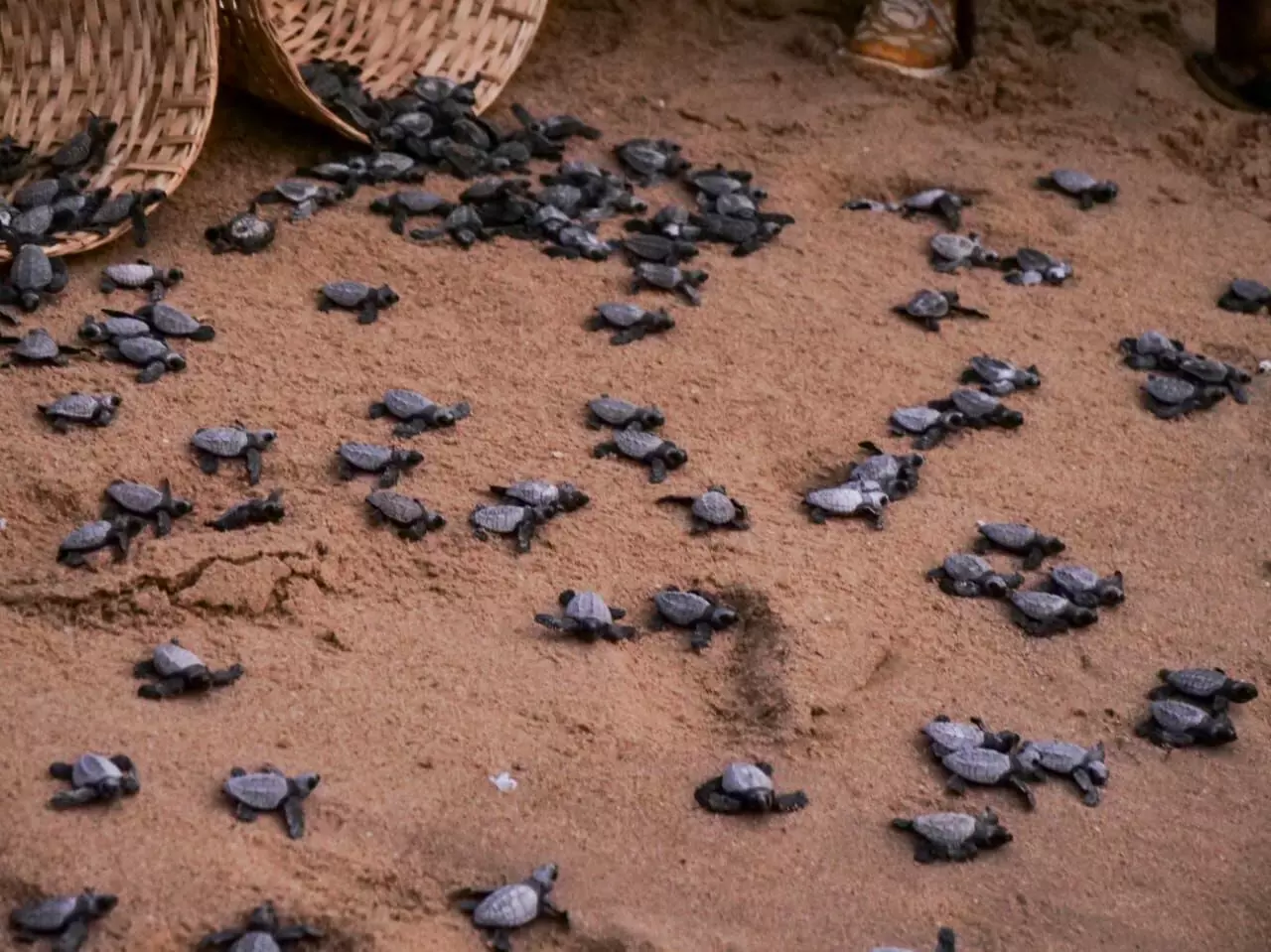Visakhapatnam: How fishermen, forest officials protect lakhs of endangered Olive Ridley Turtles
In an attempt to conserve the Olive Ridley Turtle eggs, Andhra Pradesh Forest Department has set up six hatcheries along the coastline of Visakhapatnam.
By Amrutha Kosuru
Visakhapatnam: A little before the sun rises, P Srinivas and a couple of other fishermen set out with a thin stick to scout for Olive Ridley Turtle's eggs in RK Beach.
Following small turtle footprints on little sand dunes and sand consistency, the fishermen dig out the eggs of the endangered visitor. The fishermen carry the Olive Ridley Turtle eggs back to a hatchery (nesting area) as if they are their own babies.
In an attempt to conserve the Olive Ridley Turtle eggs, Andhra Pradesh Forest Department has set up six hatcheries along the coastline of Visakhapatnam. Each hatchery stations 3-4 fishermen who scour as much as 6-7 km daily for the turtle eggs. The eggs are brought back to the safe spot- hatchery, which is also guarded by the fishermen to ensure no one enters the nesting area. The hatcheries are rectangular-shaped areas covered by tall makeshift sticks that ensure no one enters the area.
"The eggs are very fragile. They break easily," says Srinivas explaining that the conservation of Olive Ridley Turtles is done particularly to ensure that they are not damaged by humans, animals, and other external factors.
The hatcheries are something of a secret spot. Fishermen use it to nest the eggs. No one except the fishermen is allowed to venture inside.
Srinivas has been helping conserve the eggs for more than 15 years. "Sometimes the turtle's footprints are visible and that's how we know then that there are eggs there," he says.
He says each turtle lays around 100-150 eggs. Out of these, approximately 10 eggs do not mature properly.
"If the eggs are left like that, then dogs dig them out and eat them. Or sometimes unknowingly, humans stamp on them too," explains Veeraju, another guard.
The eggs are relaid at the hatcheries at a considerable depth.
"Olive Ridley Turtles have a connection with the shore they are born in. The geographical location is engraved in their minds. So when these hatchlings come of age, they come back to the same location to lay the eggs. And the cycle goes on," says Veeraju
The eggs collected hatch in 45-60 days depending on the temperature. "After they hatch, hundreds of baby turtles dig their way out. And I have been seeing them for so many years, but every year, it's new. All of us feel some sort of motherly achievement when we set the baby turtles out into the sea," Veerraju says.
The nesting period of the Turtles is generally from November to March with the peak being from January to February-end. As many 100 nests are formed by the end of March. So far, RK Beach is currently housing eight nests with a total of 960 eggs and Jodgullapalem is housing one nest with 82 eggs.
According to the AP Forest Department, last year as many as 90,000 hatchlings were successfully released into the ocean.
History
Olive Ridley Turtles were first spotted on the Visakhapatnam Coastline in the early 1980s. Their mass nesting activities have been monitored by various organizations since then. Fishermen have been involved in the conservation of turtles for more than 15 years.
Olive Ridley Turtles has been categorized as a 'Vulnerable Species' as per the International Union for Conservation of Nature's (IUCN) Red List, which is why the conservation of the species is important. The classification implies that the turtles are at a high risk of extinction due to humans. Hence, they require human support/intervention to survive.
The turtles are migratory in nature and come to Visakhapatnam for nesting. According to I Jagadeesh, supervisor of the project and the Protection Watcher in the AP Forest Department's Strike force, turtles prefer white sand beaches with a slopey shore which makes Visakhapatnam a perfect place for breeding and nesting for the turtles.
The alarming rate of Climate Change is also an issue of concern for the incubation of the Olive Ridley Turtles, Jagadeesh says. He explains that as the temperature keeps rising, the hatching time begins to vary. "If it gets too hot, we cover the artificial nesting spots with semi-wet gunny bags," he says.
The six hatchery locations in Visakhapatnam are located are Jodgullapalem, RK Beach, Chepaluppada, Pedhanagamayyapalem, and Muthyalammapalem.